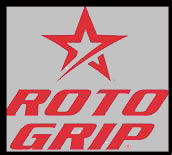 |
|||||||
|
|
Phone 612-423-2102 612-866-7577 E-mail TaoAthletes@aol.com Website Past Articles The Future Of Our Sport? The beauty and the curse of bowling is that it can be both recreation and a sport. It is obvious that the industry as a whole is leaning more and more to the recreational aspect. The latest statistics show that nationally sixty percent of bowling income is from open play. This focus on the recreation aspect was recently impressed upon me when a league secretary of a Friday night league in a corporate owned center inquired about league openings at my parents bowling center. The reason they were looking for a new place to bowl was not because they where dissatisfied with the center, but rather because the center had decided they could make more money on corporate parties and open play. They no longer wanted any leagues on Friday nights. I’m not a business man, and I have no idea if turning away leagues makes financial sense, but this current trend of designing centers and marketing to the recreational bowler (couches in the settee area and game rooms bigger than my parents 12 lane center) has got me thinking of what the future of the “sport” part of our industry might be. I have read numerous articles from the USBC and BPAA about the need to grow the sport of bowling and the importance of coaching in that process. They frequently talk about the rapid growth of High School Bowling and how that growth will lead to resurgence in the popularity of bowling as a sport. The first question I would ask, is how do we define sport, and how many of us actually look at bowling as a sport. I believe for an activity to be considered a sport, the participants must consider themselves athletes, and to train and think like athletes. I have never been an elite athlete, but have managed to be competitive in many different sports, including Hockey and Baseball throughout High School. After High School I began running to stay in shape and have completed 13 Marathons. It has been my experience that to become successful in sport requires a great deal of discipline and commitment to both the understanding of how the sport is played, and to the physical demands of training for the sport. I didn’t start bowling until I was in my twenties and didn’t really learn how to bowl until I was in my thirties. To this day, it is my greatest frustration how few bowlers really treat bowling as a sport. It never ceases to amaze me how many bowlers don’t know some of the most elementary aspects of our sport. Knowing how many boards are on a lane, how long the lane is, being able to identify pins by their number and many other basic aspects of our sport should be routine knowledge to any bowler who wants to compete at more than a recreational level. Not only do many bowlers that I question during a lesson or clinic not know these answers, many seem to have little interest in learning the most basic elements of our sport. This lack of desire to acquire the most basic knowledge of our game both puzzles and frustrates me. I have been coaching youth bowlers for 20 years and a high school team for 14 years. In the last few years, bowling has become the fastest growing high school sport in the nation. I applaud everyone in our industry that has helped to fuel this growth. Unfortunately, sanctioned youth league bowling has not grown, and has in fact seen a similar decline as sanctioned adult bowling. What could explain this disparity? I believe many of the same problems that affect the decline of adult leagues, also affect youth leagues, such as competition for the entertainment dollar and the season being too long. There are also a lot more sports and entertainment options for youth to chose from these days with the growth of extreme sports and home entertainment systems. So what has fueled the growth of high school bowling, and who is participating? Last summer I was leading a camp in New York with Kelly Kulick, and we were imploring a group of youth to use their legs more and to “think like athletes” when a young lady stopped us to announce that “ but Don, I’m not an athlete, that’s why I chose bowling”. We all had a good laugh, but it occurred to us that this is what we are seeing more and more of in our camps. This young lady had come to camp the year before averaging 95 and how come back now averaging 160. She was quite happy with her improvement and had little desire or understanding of what it would take to reach the next level of success. I assisted Dick Ritger with a high school camp recently in Michigan. Out of the 40 bowlers there, only one played in another sport. In camp after camp I am seeing this same trend of non-athletes making up the majority of new high school bowlers. Most do not bowl in regular youth leagues and seem to have very little idea of what it takes to think and train like an athlete. I was very fortunate to have had several good athletes on my high school teams for several years and we dominated our conference, winning 10 titles in 11 years against very good competition. They understood how to train and think like athletes and how to compete. On my current high school team I have one athlete, a young lady who is not only an excellent bowler but has lettered in cross-country running, cross country skiing and track and field. The rest of my team is filled with great kids who work hard and have improved tremendously over the last couple of years, but they are limited in their growth by their lack of athleticism. I had one young lady show up this year who liked to open bowl using the bumpers! I have seen a similar decrease in the skill level of the other teams in our conference. I would guess that there are no more than five bowlers in the league that have any experience in playing another high school sport. I’m not saying that there is anything wrong with this current trend, but it should give us pause to consider what the eventual impact if any might be. How many of these high school bowlers will continue to bowl after high school? How can coaching help retain these bowlers and how can we appeal to a broader base of young people who don’t currently view bowling as a sport and a way to challenge their athletic abilities? Most of what I read of coaching these days seems to revolve around high tech video analysis, that will give us information about our rev rate, axis tilt, launch angles and so on. While I think this type of technology and coaching can be very beneficial to the high skill bowler, I have to question how effective it is for the beginning and intermediate bowler. In the real estate world they list the three most important things for success are location, location, location. In bowling, I would list the three most important things for success are fundamentals, fundamentals, fundamentals. In every sport that I know of, fundamentals are achieved by breaking the game down into very specific elements of the game through a series of progressive skill drills and than blending all of the elements together to form the complete package. When I teach in Europe, one of the most frequently asked questions is “ how many hours per week do you need to train to become a good bowler” or “how many years do you have to train to become a good bowler”. I really like the term “train” it indicates a level of understanding of the commitment that it takes to achieve success in sport. I believe that as an industry we need to focus on developing coaching programs that focus on the fundamentals of our sport through skill development. We need to present ourselves as athletes, and encourage everyone who participates in bowling to think of themselves as athletes also. We need to emphasize that the same discipline and commitment that a football or baseball player brings to their sport, we as bowlers need to bring that same discipline and commitment to our sport. I have no idea what the future of our sport might be, but for their to be any chance of growth, I believe that we need to make this commitment to teaching core fundamentals and presenting an image of bowling as a sport through training and thinking like athletes. |





